| 1 | Restricted to rocky streams |
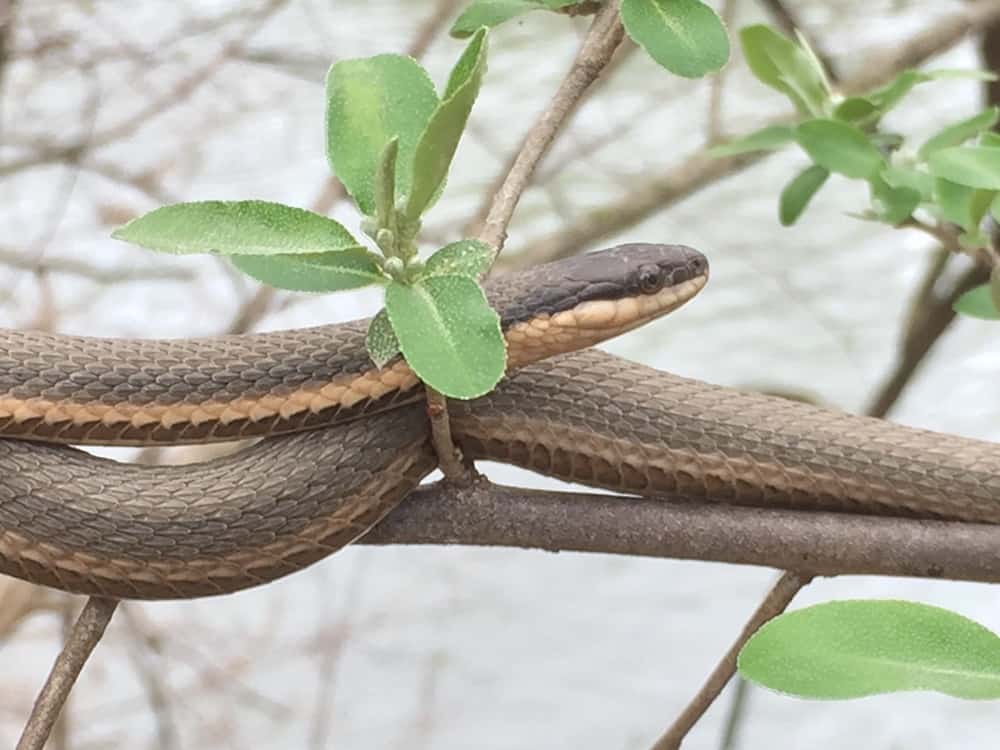
The queen snake is a serpent primarily of the eastern USA, spilling into Canada and stretching southwards as far as panhandle Florida and Alabama. Unlike the garter snake, which goes where it pleases, the queen snake has some of the narrowest habitat requirements of any US snake.
Firstly, this is a water snake which rarely strays from streams, and even then no more than 6 metres (usually 3). Secondly, queen snakes need streams with a rocky, gravelly bottom to allow them to take shelter. Queen snakes always need a water current, favouring moderate to fast flowing steams, which must be year-round rather than temporary run off streams activated by rainfall. Queen snakes only rarely appear in ponds or stagnant, misty swamps. In fact, the queen snake’s closest relative is the Graham’s watersnake (Regina grahamii). Except for subtle scale counts, the main difference is that Graham’s watersnake is adapted to swamps instead.
According to an Ohio study, the queensnake cannot cope with streams cooler than 18.3 degrees Celsius for the majority of the active season.
| 2 | Never appears in towns |
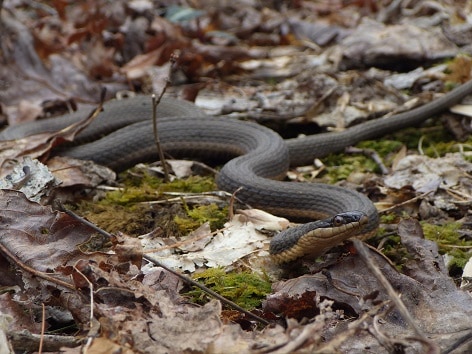
Queensnakes only appear in rural areas, almost never in a river beneath a bridge in the centre of town. They can have a very narrow range even within a river, hanging around along just 3-5 metres of shoreline.
There are secret signs to watch for, as a study in Ontario found that queensnakes were commonly found near willow and cottonwood trees. Herbaceous, marshy meadows were popular, but they avoided shorelines shaded by heavy canopies. Queensnakes generally like rivershores with moderate forests, which are open enough to allow several hours of sunlight per day. They like water which is clear, rather than murky and silty. They also like still pools on the edges of rivers, possibly for hunting and resting. Rocks are all-important for the queensnake. Rivers not with constant muddy flats, but a rugged rocky shoreline are more likely to host them. Limestone is a particular favourite.
You won’t see queensnakes on epic expeditions to find hibernation dens either. These are normally mere metres from their summer streams. Their dens include natural rock niches, crevices in walls and dams, and old bridge abutments.
| 3 | No threat to mankind |

The queen snake is very alert, yet timid and shy. It almost never bites, whether picked up, falling into a fishing boat from a tree, or accidentally stepped on. The queensnake will wrestle and thrash violently in the palm of your hand but its teeth will never make contact with your skin. The worst weapon they possess is a foul odour. A theory is that their heads are too sleek and thin, lacking the crushing jawbones to inflict real harm. Meanwhile, its neighbour the northern watersnake has a robustly structured head, and is one of the more vicious non-venomous snakes.
The queensnake is very quick to drop off branches when approached, into the safety of water below. Despite being timid, they’re perceptive of their surroundings and know exactly what’s happening in all directions around them. Water is their safe zone, as they move faster in water than on land regardless of temperature.
| 4 | ID: check the belly |
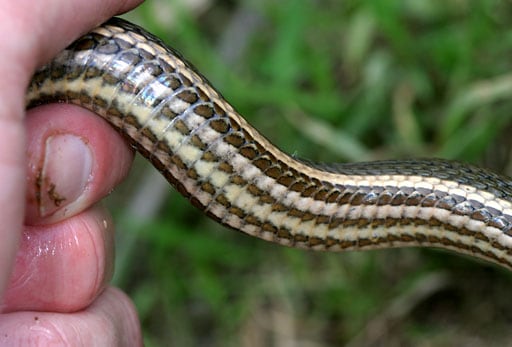
The queen snake is primarily black contrasting against yellow, with only minor colour variation across its empire. Some have confused them with garter snakes due to the thin, parallel stripes running down their body.
However, queensnakes have four vertical stripes on the belly, while garter snake bellies are a consistent colour. The Latin name Regina septemvittata translates to 7-striped queen. The belly is a great way to identify queensnakes, as many snakes have a tapestry of patterns on their back, but one solid colour on their bellies. The queensnake, if anything, is more patterned on its belly (ventral surface).
This is a fairly short snake at 60cm, with the largest ever recorded a mere 94cm. The queensnake has round black pupils, with a brown iris, and their tongue is a dark reddish-brown. Their head is small, not particularly bulky. As they age, the 7 stripes may fade away. Young queensnakes have more noticeable stripes on their back. Newborns measure 18-20cm, and grow 75% or 15cm in their first year. The queensnake has rough (keeled) rather than smooth scales to touch.
| 5 | Diet: over 95% crayfish |
The queensnake is as narrow in its diet as in its habitat. Other prey have been recorded occasionally, like dragon fly nymphs and a snail, but the queensnake gets almost all of its calories from crayfish.
A study in western New York analysed 45 queensnakes, and found that crayfish comprised 99.4% of total food consumed. In Kentucky, a dissection of 120 queensnakes revealed a crayfish diet count of 98.6%. The vast majority of these were one species: Orconectes juvenilis, AKA the Kentucky river crayfish. In New York, 94% consisted of Orconectes obscurus, the obscure crayfish.
The striped crayfish snake of Florida goes for adult crayfish with tough shells. It has sharp, saw-like teeth for gripping and swallowing them. The queen snake avoids these tough meals, instead going for easy crayfish in the middle of moult. With such fine taste buds, queen snakes are a nightmare to keep in captivity – force feeding them mice is impossible.
| 6 | Rock hollow ambushes |
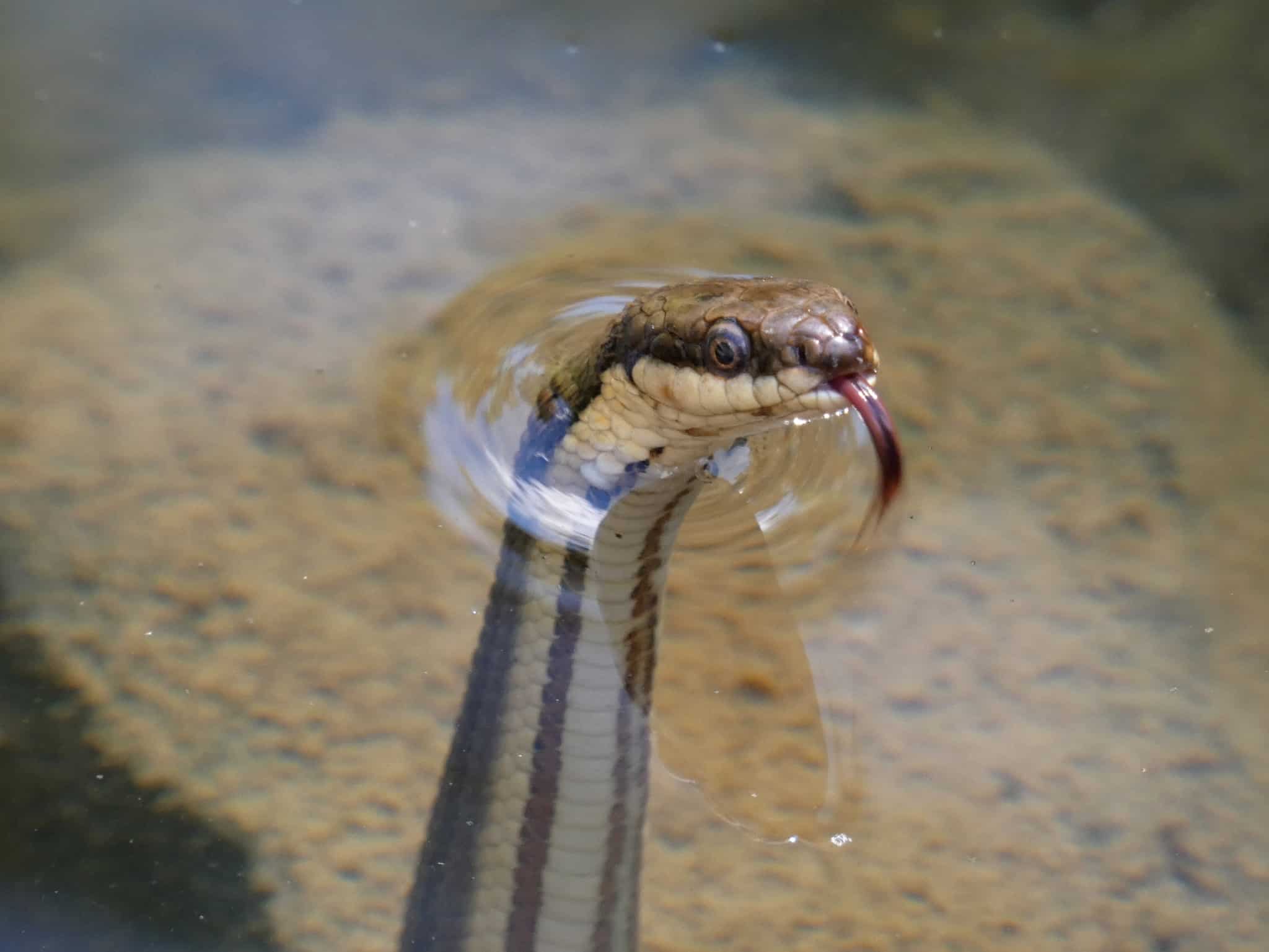
Summer is the peak feeding time for queensnakes. In colder weather, they still rely on crayfish (94.1% in one study), but a lower amount of queensnakes have food in their bellies. This is probably because the crayfish themselves disappear.
Queensnakes are pretty lazy hunters, and will normally swim to submerged rock shelters where they know that freshly molted crayfish hang out. There, they’ll wait patiently in ambush, hidden in a hollow. Occasionally though, crayfish turn the tables, and dine on young queensnakes, the hunted becoming the hunter. They don’t roll over when pursued by queensnakes either, and will fight back in aggressive duels.
Queensnakes sometimes swallow dead crayfish, and have been spotted lurking in small riverside pools with only their heads protruding above the surface. Queensnakes hunt at specific hours, mainly 8-10am, and then an afternoon session starting from 4-6pm. This is a day-faring snake, but midday is the worst time to find them.
| 7 | Super-attuned to crayfish scents |
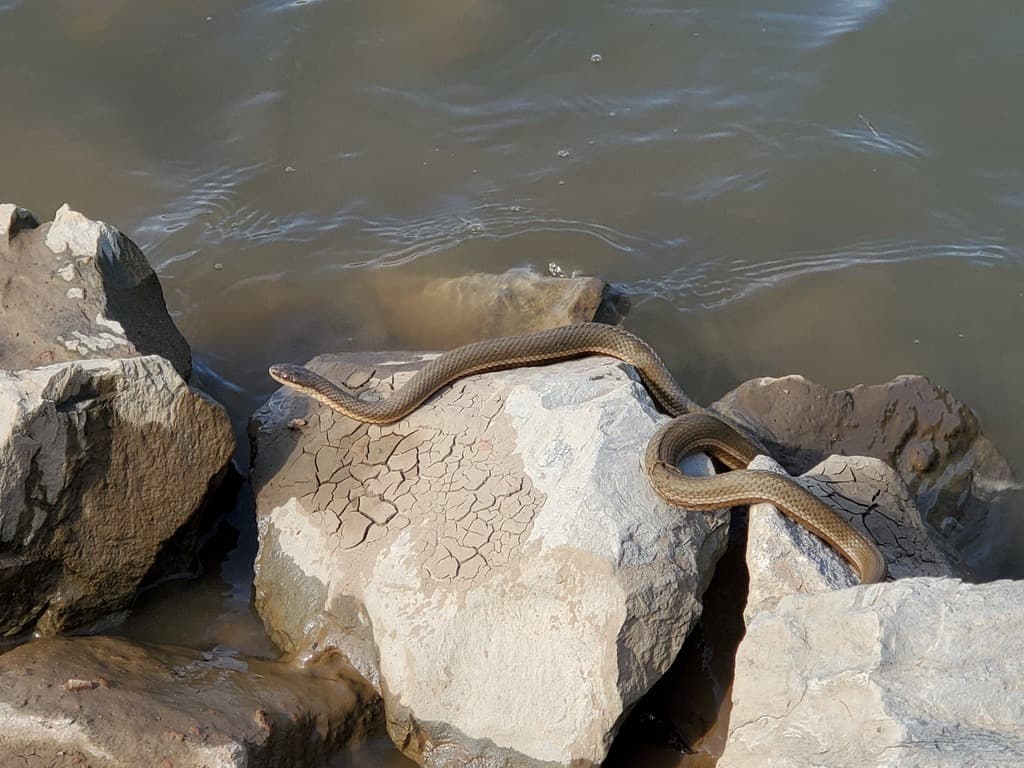
Ecdysone is a steroidal prohormone which controls the moulting process in numerous arthropods, including crabs and crayfish. Queen snakes not only spot crayfish with their shells and spikes, but can detect this chemical diffusing through the water, like a bear smelling an elk carcass from 20 miles away. It’s like a male rattlesnake sniffing out the pheromones of a breeding female, to an ultra-specific species level, but converted to hunting purposes instead.
A study compared the queensnake to the northern watersnake, which has a far wider diet. When exposed to ecdysone, the northern watersnake didn’t respond, with no inquisitive tongue flecking. But the queensnake became far more interested, and when a crayfish extract was shown to them without the ecdysone, it had no effect. The queensnake swallowed the crayfish in 5 out of 7 trials with the ecdysone, but none without. Its tongue flecking doubled.
The queensnake is an ultra-specialised predator, although there were some concerns raised: manmade pollutants that could mimic ecdysone and throw off the snake’s sensors.
| 8 | Neighbour: northern watersnake |
Put two maps side by side, and you’ll see that the queen snake shares a large range with the northern watersnake. They also live in the same rivers, sometimes side by side. Like its neighbour, the queen snake sometimes climbs up branches overhanging rivers to rest for a while. They might even rest on the same branch. When winter comes, queensnakes have no problem snuggling into the same rocky crevice as a northern watersnake, without snapping or biting.
The queensnake is also a student of the school of death-feigning. In a 2017 encounter, two young queensnakes flipped over onto their backs and remained motionless for 10 minutes. Their grey bellies blended into the cold riverside rock perfectly. Scientists captured the images here.
Of 3900 snakes worldwide, the queensnake’s closest relative is Regina grahamii, Graham’s watersnake. There are many similarities, as both prefer newly molted crayfish over adults with hard carapaces, and both respond eagerly to the ecdysone crayfish chemical. However, Regina grahamii has more flexible habitats, also including swamps, moist meadows, and roadside ditches. They’re more tolerant of human areas, and they live further southwest, occupying central US states like Arkansas, Louisiana and Nebraska, as far south as Texas.
| 9 | Edging towards extinction? |
The queensnake isn’t at imminent risk of vanishing, but their range is being pushed back on all sides. Their narrow habitat requirements make them vulnerable to housing developments and pollution, and the canalization of wild streams, but their narrow diet of crayfish is the weakest link. Crayfish are vulnerable to factory chemical spillages, including the heavy metal mercury, and when they disappear, so do the queensnakes.
In New Jersey, the queensnake hasn’t been officially recorded since 1977, although anecdotal sightings from reptile enthusiasts are still reported in. In Canada, they once extended eastwards to Toronto, but the last sighting was in 1858 (this was the only sighting ever). They still survive in Ontario, but this coincides with Canada’s most heavily populated region. Some of the most reliable Canadian hotspots are the Thames river, Maitland river and Grand river, but they haven’t been sighted in Bayfield river since the late 1970s. The Canadian queensnake realm is fully separated from the US further south, with no link up.
The queensnake is believed to be extirpated in Missouri, due to the construction of dams. They still survive in New York state, but no other northeastern states (officially anyway).
| 10 | Mysterious mass gatherings |
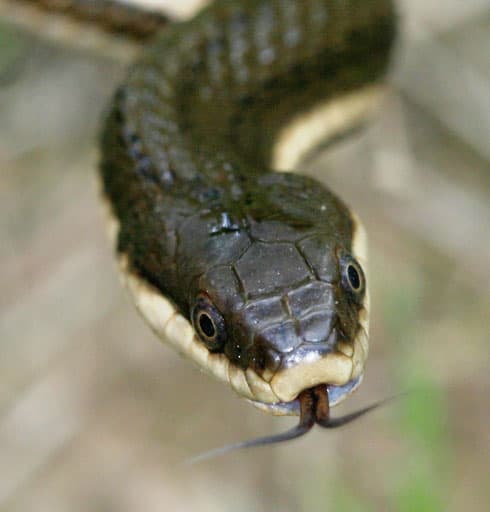
Queensnakes sometimes gather together for unexplained reasons. In 1947, a Mr Neil spotted a group of “dozens upon dozens” gathered together in a creek in Georgia in November. Neil believed this to be the entire river’s population, as they were quite scarce there. In 1944, a Mr Wood spotted a gang of 47 resting together, on saplings overhanging the Miami River of Ohio. The greatest record happened on September 22nd 1946, when three determined scientists scoured a 100 metre stretch of creek in Ohio, and came up with 125 queensnakes in an hour.
These gatherings happen in autumn, and may be connected to hibernation. It’s possible that they were resting together on a small stretch of riverbank, and a burst of unusually hot weather triggered them all to return to action at once. Or maybe, this was their final conference before heading off for the winter. Other weird sightings include an Ohio queensnake resting peacefully on top of ice in January.
